Iceland In February means crisp winter air, a chance to see the northern lights, beautiful snow, fewer crowds, and cheaper prices.
For all of these reasons, planning a trip to Iceland in February is perfect for any tourist looking for a winter adventure!
I recommend traveling during this time because Iceland in winter is truly magical! Enjoy classic landscapes covered in snow or warm up in a scenic hot spring.
Planning your trip to Iceland last minute?
Make sure to book your hotels and tours in Iceland in advance to ensure availability! The longer you wait, the more difficult it gets. Here are my top picks for your trip:
Top Experiences And Tours In Iceland:
- Golden Circle Full Day Tour From Reykjavik (Likely to sell out!)
- Silfra Snorkeling Tour (Includes photos + only small group)
- South Of Iceland Full Day Trip (Our pick!)
- Whale Watching In Reykjavik (On a luxury yacht)
- Northern Lights Bus Tour (Great to go with a local)
- Ice Cave Tour And Glacier Hike (Likely to sell out)
Tickets You MUST book in advance:
- Keflavik > Reykjavik Bus Airport Transfer (Skip the line!)
- Sky Lagoon Entrance Ticket (Includes 7-step spa ritual)
- Blue Lagoon Entry Ticket With Drink (Likely to sell out!)
Top picks for places to stay in Iceland:
- Hotel South Coast (Great central location)
- Grandi Reykjavik (Includes free breakfast)
- Hotel Kria (Close to black sand beach)
- Hotel Skaftafell (Mid-range price)
Though the weather in Iceland in February is consistently cold, you should not miss out on the country’s winter!
If you’re looking for things to do in Iceland in February, I’ve got you covered with suggestions for day trips to thundering waterfalls or festivals in the capital.
In other words, you’re in for a great time in a remarkable country.
Keep reading for my best tips on writing an Iceland itinerary for February!
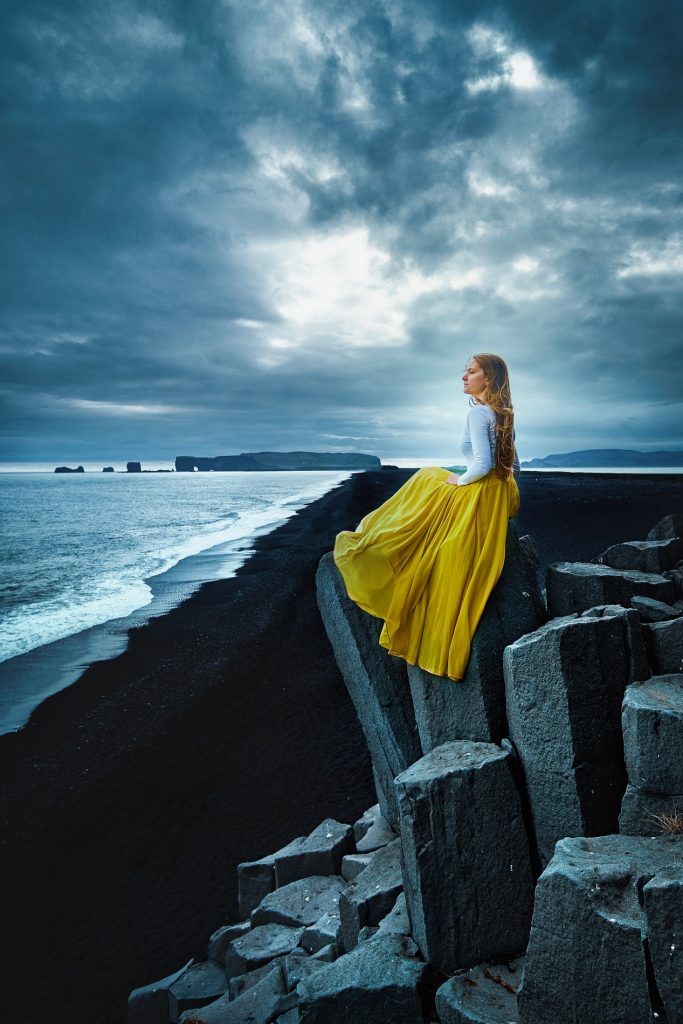
Iceland In February: 7 Things to Know Before You Go
Pack for Both the Cold and the Wind
February is one of the coldest months of the year in Iceland. The temperature in Iceland in February reaches an average high of about 37 degrees F. You must be prepared for the cold!
What makes the Iceland February weather particularly rough is its versatility and unpredictability.
Packing for Iceland in February can be a pain because you have to prepare for every type of weather including sunshine, harsh winds, rain, and snow.
Many tourists expect snow and even rain, but the wind catches many by surprise. You’ll likely get wind for at least part of every day. Wind speeds reach up to over 15 miles per hour.
In addition to heavy winter coats, rain jackets, and waterproof hiking boots, you’ll need to bring a windbreaker to brace yourself against the mighty Icelandic winds.
The Iceland weather in February changes frequently throughout the day. As long as you know what to expect and come prepared, you’ll have a wonderful trip no matter what weather is thrown your way.
Do not let the Iceland temperatures in February dissuade you from getting out and about!
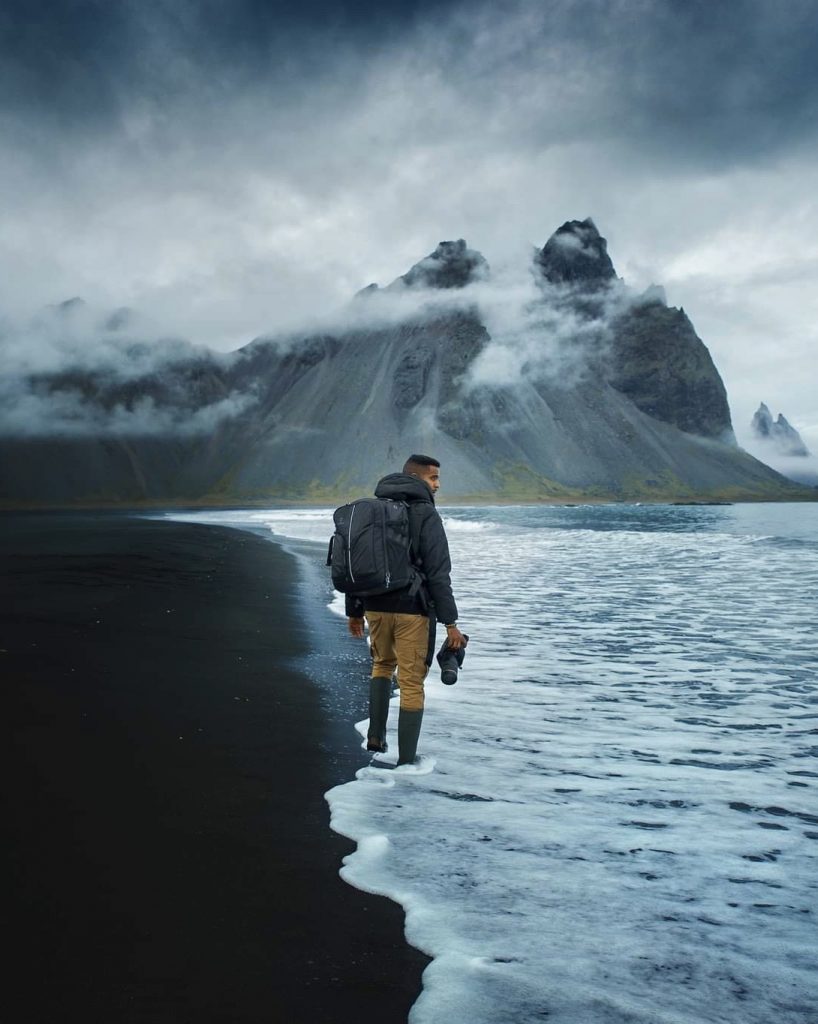
Daylight Hours Start To Get Longer Again
Though I just talked about February being one of the coldest months in Iceland, the good news is that the daylight hours are starting to get longer again.
Winter in Iceland can be rough with seemingly never-ending darkness, but in February the island gains a whopping 6 minutes of sunlight a day.
Though relative to the other seasons, the sun still rises late and sets early. There’s a significant difference between February and the few months preceding it.
Much of Iceland’s beauty and appeal lies outdoors, so having more hours of daylight during February in Iceland is crucial when it comes to exploring the country.
You’ll have plenty of time to adventure throughout the day and still have the opportunity to see the northern lights at night.
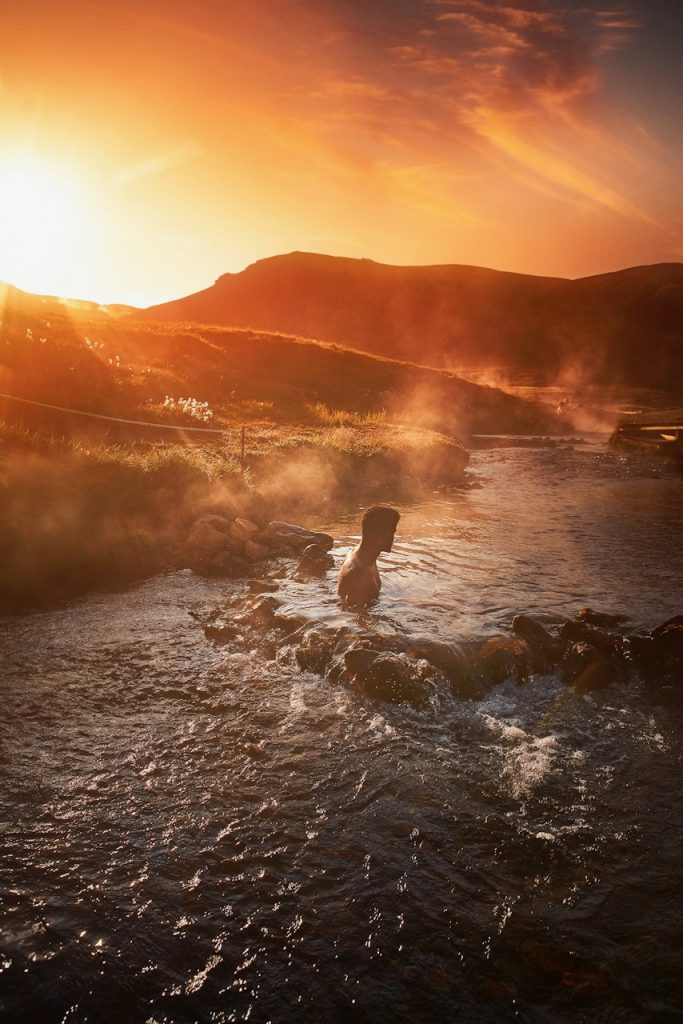
There is a High Chance of Seeing the Northern Lights
From roughly September to April, the northern lights in Iceland have the potential to grace the sky on a clear, crisp night.
Visiting Iceland in February greatly increases your chances of seeing this spectacular natural phenomenon.
As you hunt for the notoriously elusive northern lights, it’s important to keep in mind that nature is fickle and doesn’t always deliver the exact result you want.
Dark skies away from city lights give you the best chance of seeing the northern lights on a high-activity night. Though it is possible to see the northern lights in Reykjavik when the aurora is particularly strong, the probability increases the further venture.
There are two great options for searching for the northern lights.
If you enjoy having control of your own schedule and have access to a rental car, driving out in search of the lights yourself can be the perfect option.
Be sure to track the aurora’s strength and visibility. When the forecast is high, pick a dark part of the island and feast your eyes on the dancing light show.
The other option is to take a guided northern lights tour. This makes the experience easy as all the work is done for you. The guides keep up to date with the forecast and know the best places to take you.
Most tour companies will allow you to book another tour at no extra cost if you weren’t able to see the northern lights the first time around.
However, if you’re lucky enough to spot the northern lights in February in Iceland, you’re in for a real treat!
Book Here: Iceland: Northern Lights Bus Tour from Reykjavik
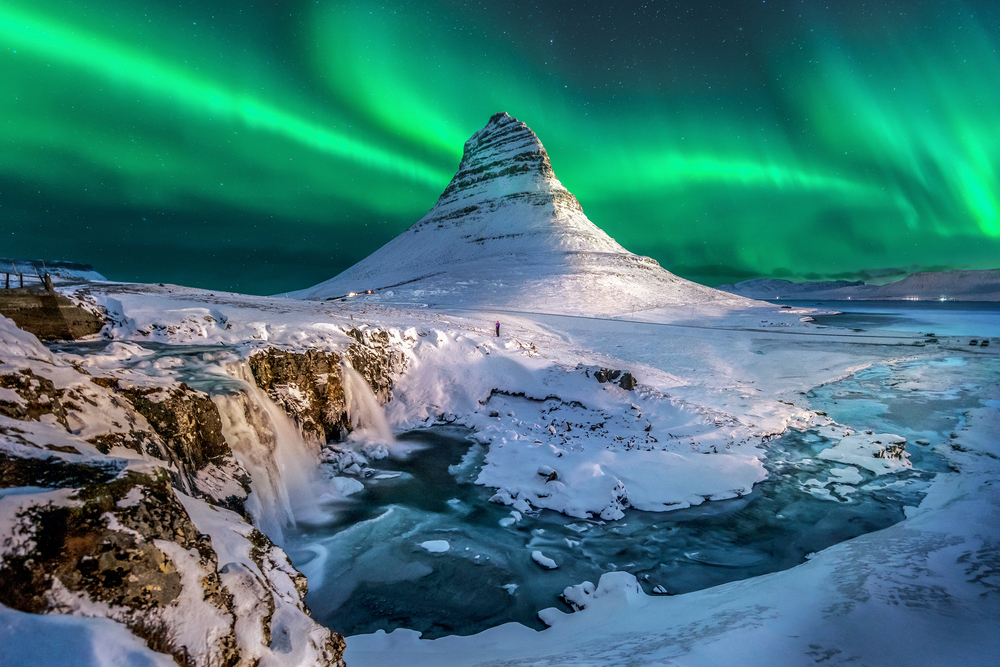
Bring a Swimsuit to Take Advantage of Natural Hot Springs
The hot tubs and hot springs in Iceland are amazing at any time of year! But thanks to the weather, the escape from the cold becomes increasingly appealing during February in Iceland.
There’s nothing quite so magical as thawing out in the warm water of a hot spring! Gaze out at the ocean and mountains beyond while a thin film of snow drapes itself around you.
Every town in Iceland has a public pool complex complete with a heated outdoor swimming pool and at least one hot tub. Some of the larger complexes, especially the ones in Reykjavik, have multiple hot tubs of varying temperatures.
Natural, geothermally heated hot springs are a wonderful more remote alternative to the public pools.
Located throughout the country in some of the most picturesque spots on the island, you can relax in the warm water while enjoying the stunning natural landscape around you.
Another option is to head to any one of the major lagoons such as the iconic Blue Lagoon, the Mývatn Nature Baths (the Blue Lagoon of the north), or the upscale Sky Lagoon.
These cost money and cater to a more touristy crowd, but the Blue Lagoon in particular is quite spectacular. It is worth breaking out the wallet at least once!
Book Here: From Reykjavik: Blue Lagoon Admission with Transfers
Book Here: Reykjavik: Sky Lagoon Entrance Pass With 7-Step Spa Ritual
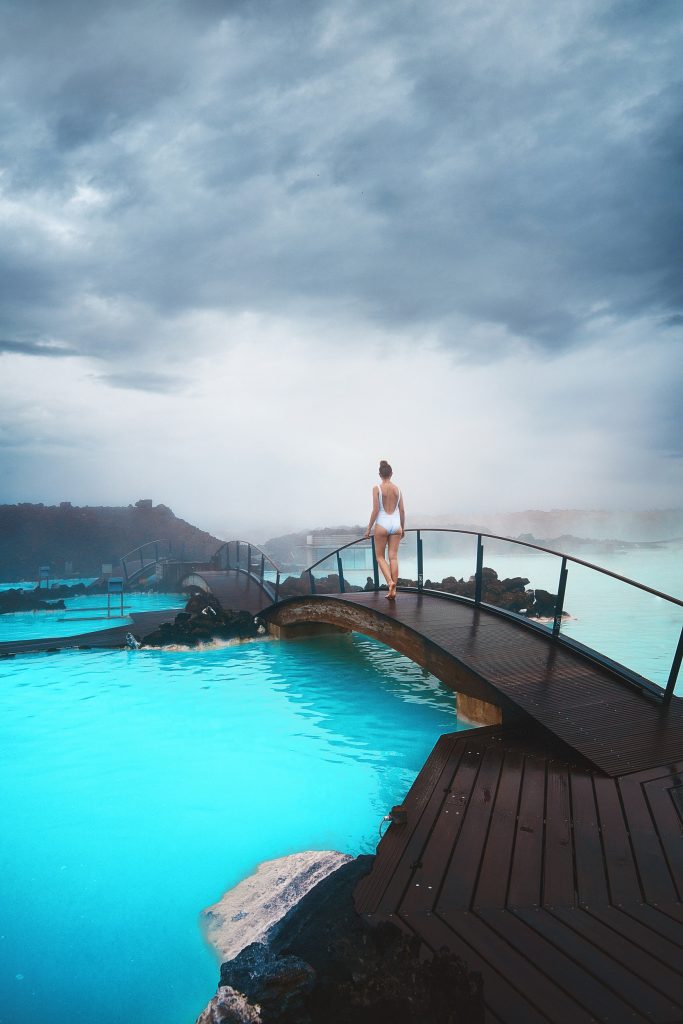
Road Conditions can be Dicey, so Don’t Take Risks!
Adventure awaits you, but before you head out on those potentially icy, snowy roads in Iceland during February, there are a handful of things to keep in mind.
It’s incredibly important to continuously check the road conditions and road closures. The f-roads into the highlands and parts of the Ring Road are closed for much of the winter.
Taking day trips from Reykjavik such as driving the Golden Circle route is entirely possible if you first ensure the roads are clear and safe to navigate.
You’re unlikely to have problems driving in and around Reykjavik because the roads are frequently plowed and salted. I suggest exercising caution nonetheless.
Driving in Iceland often boils down to using basic common sense.
Unfortunately, there are enough over-confident tourist drivers to keep the search and rescue teams busy. I know you’re anxious to explore the wonders of Iceland, but it’s not worth risking your safety.
If you plan on renting a car in Iceland in February, you’ll find the car will come equipped with winter tires. This doesn’t mean they’re completely fool-proof, however, they make driving on ice much safer.
On the rare occasion the sun comes out, bring along a pair of sunglasses. The sun reflecting off the ice can be particularly blinding.
Make sure your car is filled with antifreeze windshield washer fluid as well to keep your windshields clean and your vision clear.
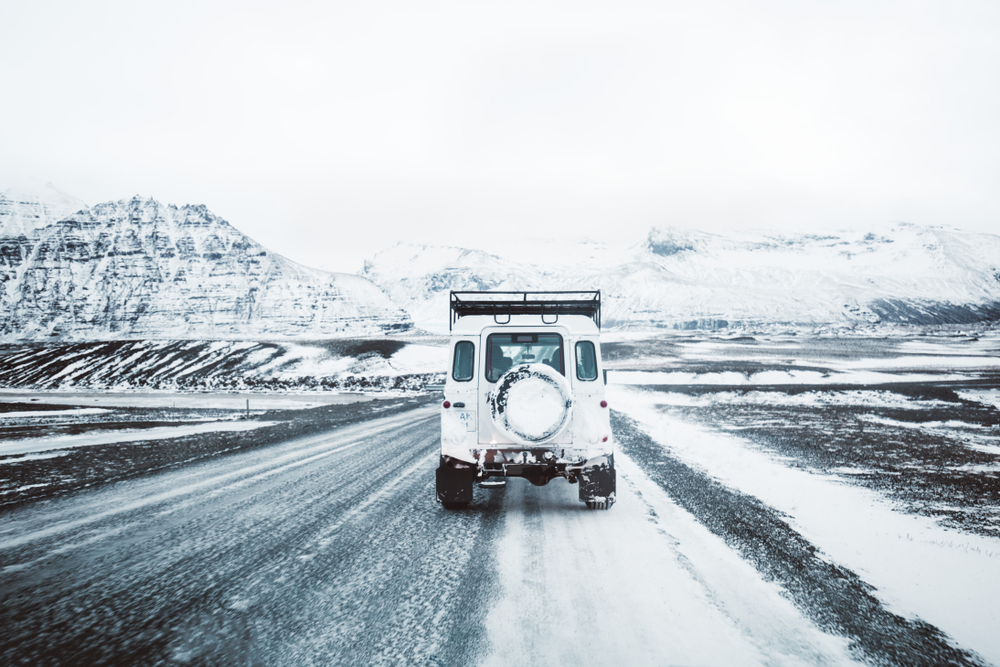
Reykjavik Lights Up For The Winter Lights Festival
If you visit Reykjavik in February, I suggest attending the Winter Lights Festival celebration.
This three-day celebration is designed for locals and tourists to embrace the joys of winter and simultaneously rejoice in the increasingly longer days.
For these three days, the city comes to life, sparkling with mesmerizing light displays featured on major buildings such as the iconic Hallgrímskirkja church and the Harpa Concert Hall.
With the help of artificial light, the dark days suddenly turn bright! You can’t help but smile and celebrate.
From Museum Night to Pool Night and all the activities in between, you have the opportunity to embrace the culture and beauty of Iceland’s capital city.
Be sure to check the event website for dates and activities.
This event is one of the best things to do in Reykjavik in February and should not be missed!
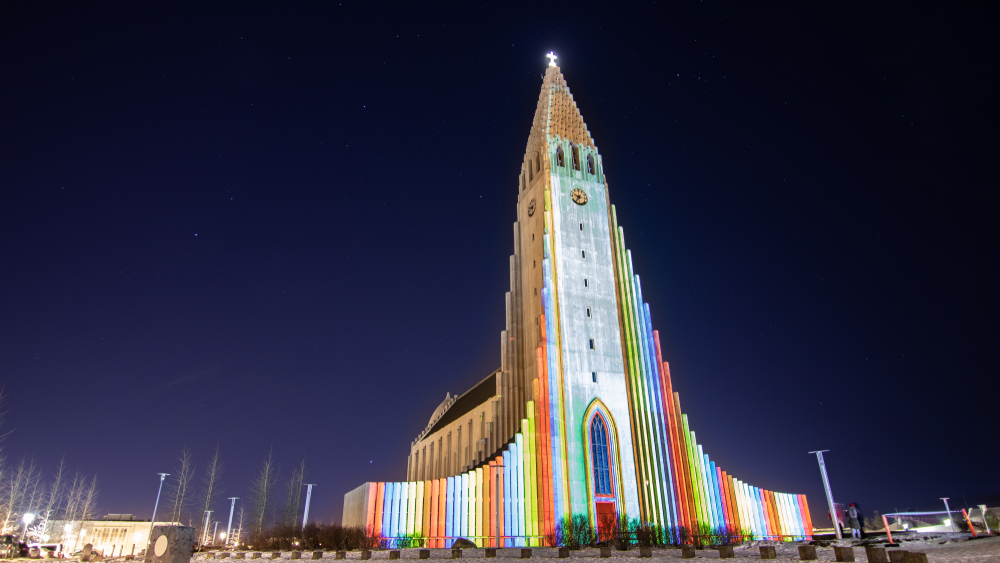
Day Trips Make the Most Sense When Visiting Iceland in February
Iceland’s Ring Road is spectacular and makes for a great multi-week summer expedition. In the winter months, however, day trips tend to make the most sense.
Many sections of the Ring Road as well as the f-roads tend to close down for much of the winter making it difficult to venture too far from the capital.
In Iceland in February, the south coast will be your friend.
Iceland’s south coast is home to some of the country’s most spectacular waterfalls such as Seljalandsfoss and Skogafoss among other more hidden gems.
Other unusual and fascinating stops include the Sólheimasandur Plane Crash and the Reynisfjara Black Sand Beach.
Further east, you’ll reach the Jökulsárlón Glacier Lagoon where you can admire floating icebergs backed by majestic glaciers.
The famous Golden Circle route is another great option that allows you to hit Iceland’s most iconic tourist spots all in one trip.
The three major stops include Thingvellir National Park, the Strokkur geyser, and Gullfoss waterfall. A volcanic caldera, a geothermally heated lagoon, and more lie on this route as well.
In the northwest lies the Snæfellsnes Peninsula which is home to the postcard-worthy landscape of Kirkjufell mountain and the Kirkjufellsfoss waterfall among other natural wonders.
Whether you’re admiring the basalt columns or gazing down into a volcanic crater, you’re sure to enjoy your time on the Snæfellsnes Peninsula.
Sticking to day trips might seem limiting, but when you discover how much there is to see within a few hours from the capital, you’ll realize there is more than enough to see and do on your Iceland travels.
Book Here: From Reykjavik: Golden Circle and Glacier Ice Cave Tour
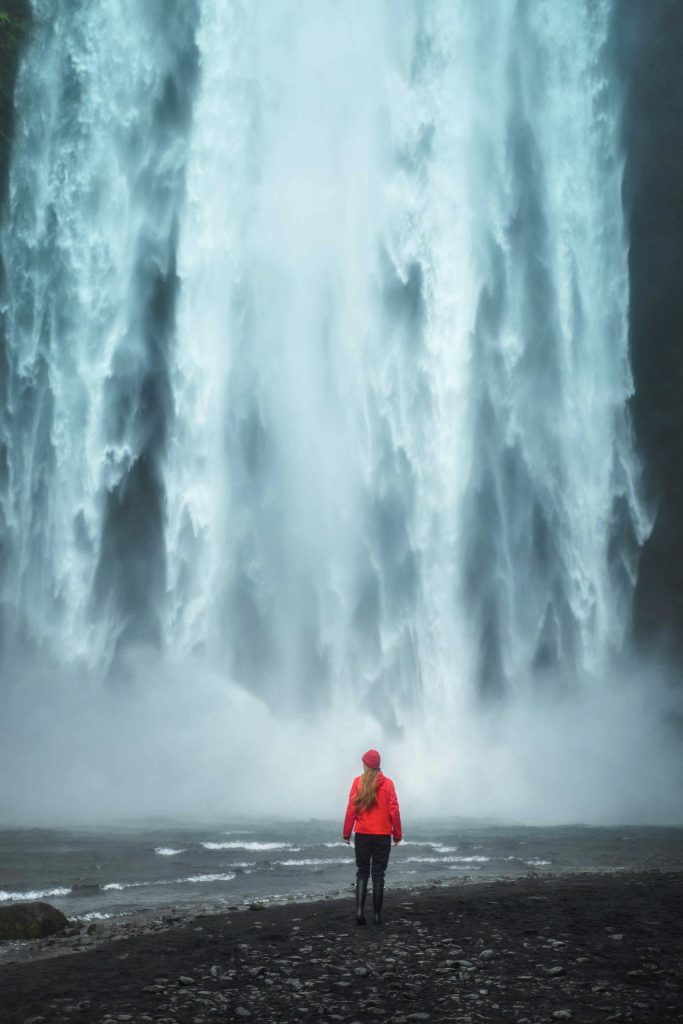
We loved visiting Iceland in February and hope you get the opportunity to as well.
With the possibility of catching the elusive northern lights or relaxing in a hot pot with the landscape around you draped in snow, it’s nearly impossible not to book your ticket immediately.
Everywhere you turn there is something new and equally stunning to enjoy. February is the perfect time to see it all.
If you have any questions or comments as you begin planning your trip to Iceland in February please feel free to let me know.

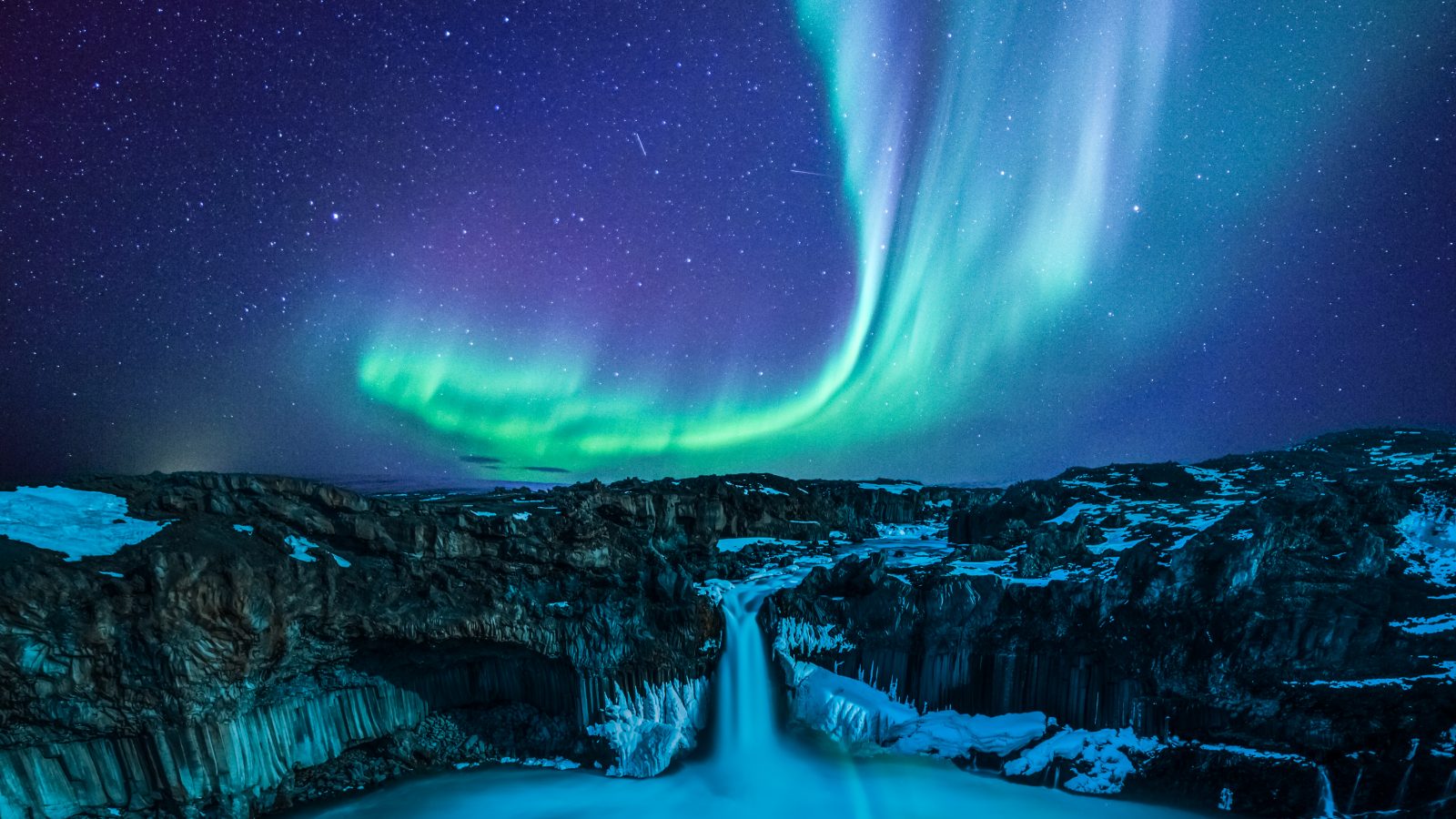
 Where To Stay On The Golden Circle: Best Hotels And Areas
Where To Stay On The Golden Circle: Best Hotels And Areas
Thanks for such a great article !!
Need to know cons of travelling to Iceland in Fenruary in comparison to July-August.
Cons are it is colder and less sunlight and you can’t do the highlands if that is something on your list!
Really interesting article. I go in 3 weeks. Have prebooked tours directly with a company in Reykjavik. Not sure I realise how cold it’s going to be!! I know earing out is expensive any tips on that?!
Hello!! It will be cold, but no colder than the northern USA! the wind is what will be annoying, so wear windproof things! i am confused what “earing out” means 🙂 but happy to help! thanks!